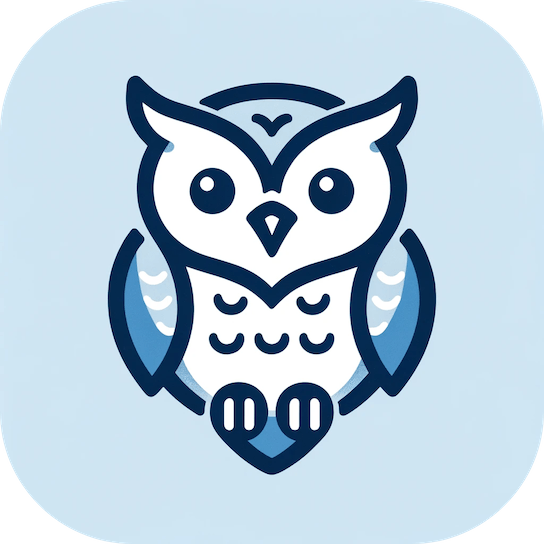On this page
Intro: This Is Why You Might Create An Online Course

Reasons for Content Creators and Social Influencers to Create Online Courses
1. Monetization of Expertise
Courses provide a platform to monetize specialized knowledge and skills.
2. Enhanced Audience Engagement
Courses enable deeper interaction and help solidify audience loyalty.
3. Establishing Authority
Creating a course helps position creators as experts in their niche.
4. Long-Term Value Creation
Online courses are assets that can provide ongoing revenue.
5. Diversification of Content
Adding courses to the content mix can attract a broader audience.
6. Scalability
Courses can reach a global audience without the need for a physical presence.
7. Personal Brand Expansion
Courses can lead to new opportunities like speaking engagements and books.
8. Community Building
Courses often include community elements that strengthen audience connections.
Here, we’ll walk you through each step of creating your first online course. It might seem challenging, but you can reach new audiences and open new doors with a clear path forward.
Getting Started: Planning Your Course

Before you dive into the world of online course creation, a solid foundation is essential. This begins with three key steps: identifying your audience, choosing a relevant topic, and setting clear goals (more on this later).
Identify Your Audience
Understanding who your course is for will guide every decision you make. Are you targeting beginners or more advanced learners? What are their interests or professional needs?
Conduct surveys or explore forums and social media to connect with potential students.
This insight will ensure your content resonates and meets the demands of your audience.
Choose a Relevant Topic
Your expertise is valuable, but aligning it with what people want to learn is essential. Research trending skills or ongoing professional gaps in your field. Tools like Google Trends can provide a snapshot of what topics are gaining traction.
Select a subject that interests you and is also in demand.
Set Clear Goals

What does success look like?
What do you want your students to achieve by the end of your course? Setting clear, measurable objectives (consider SMART Goals) helps you structure your content and gives your students a concrete understanding of what they will gain.
Whether mastering a skill or understanding a complex concept, your goals should be specific, achievable, and tailored to your audience’s needs.
By starting with these fundamental steps, you’re positioning your course for success from the outset.
Designing Your Course Content

Once you have a plan, the next step is to design your course content. This phase is crucial for capturing and maintaining student interest. Here’s how to do it effectively:
Structure Your Course into Modules
Breaking your course into manageable modules helps students digest information better and track their progress.
- Start with an outline covering your main points, then divide these into sections or chapters.
- Each module should focus on a specific aspect of your topic, building on knowledge incrementally.
- This structured approach also makes it easier for students to return to specific content if they need a review.
Create Engaging, Interactive Content
Engagement is vital to effective learning. Incorporate varied content types like quizzes, discussion prompts, and interactive assignments to keep students active and involved.
Tools like H5P can help you create interactive elements that challenge students and reinforce their learning.
Remember, the more students interact with the material, the better they will retain and apply it.
Use Various Teaching Methods
Different students learn best through other methods, so it’s essential to diversify your teaching strategies. Combine videos, written materials, and live sessions to cater to various learning preferences.
Videos are great for demonstrating processes or narrating slides, while texts can provide detailed explanations and additional resources.
Hosting live Q&A sessions can add a personal touch and address any questions in real time.
Focusing on these elements ensures your course content is informative, engaging, and adaptable to different learning styles.
This approach will help your students stay motivated and committed throughout their learning journey.
Technical Setup

Setting up the technical aspects of your online course can be manageable. From choosing the right platform to understanding the essential tools and learning to record high-quality content, here’s a comprehensive guide to getting the technical side right.
Choosing the Right Platform to Host Your Course
The platform you choose to host your course can significantly impact its success. Consider user interface, accessibility, integration capabilities, and cost.
Platforms like Teachable, Udemy, and Coursera offer features that cater to different needs, such as payment gateways, marketing tools, and discussion forums.
Select a platform that aligns with your technical skills and the features most beneficial to your target audience.
Essential Tools and Software for Course Creation
Creating compelling course content requires the right tools. For course development, consider using a learning management system (LMS) like
which allows you to organize content, track student progress, and manage assessments.
Tools like Canva for graphic design and Camtasia for video editing can be invaluable for content creation. Also, consider investing in software to create interactive quizzes and simulations, enhancing learning engagement.
Basic Tips on Recording High-Quality Video and Audio
Quality video and audio are crucial for keeping students engaged. Ensure you have good lighting and a clean, professional background for video.
Here are some rock-solid tips for leveling up your setup:
- Lighting
- Natural light is preferable, but soft box lights can create a bright, clear visual if unavailable.
- Use a high-quality camera; a decent webcam or smartphone camera can suffice if used correctly.
2. Microphone (paramount)
- Use an external microphone rather than your device’s built-in mic to improve sound quality significantly.
- I use the RØDE PodMic and the PSA1+ Arm, which are fantastic together!
- The RØDE NT-USB+ is also a great choice, especially for a Mac laptop, and still works with the PSA1+ Arm.
- Record in a quiet room to minimize background noise. Tools like Audacity can help you edit and enhance audio post-recording.
3. Background Music
- I observe that most online learning courses provide the same — mostly — bland music. Stand out with something exciting and unique by reciprocating other innovative self-published artists like NASCENT.
- Even if you think the tempo might be distracting, you can adjust the sound output so it’s more of a muted background but not overbearing.


Building Your Online Presence

A solid online presence is crucial for attracting and engaging students. Here’s how to establish one through a captivating landing page, effective SEO strategies, and active social media promotion.
Design a Captivating Landing Page
Your landing page is often the first point of contact potential students have with your course, so it needs to make a great impression. Ensure it is visually appealing and aligns with your brand.
Use high-quality images and an easy-to-navigate layout.
Include clear and concise headlines, engaging copy that outlines the benefits of your course, and strong call-to-action (CTA) buttons that encourage sign-ups. Testimonials and success stories can also build credibility and trust.
Tools like Wix, Squarespace, Ghost, or WordPress offer templates and plugins that can help you design an effective landing page without needing extensive technical skills.

Implement SEO Strategies
Search engine optimization (SEO) is vital for increasing your course’s visibility to potential students. Use relevant keywords throughout your site content, especially in titles, headers, and meta descriptions, to improve your rankings in search results.
Keywords related to
- “creating online courses” or
- “online teaching side hustle”
should be integrated naturally into your content. Also, ensure your website is mobile-friendly and has fast loading times, as these factors influence your SEO rankings.
Regularly updating your blog with valuable content can boost your SEO efforts and keep your audience engaged.
Use Social Media to Promote Your Course
Social media is a powerful tool for promoting your course and interacting with potential and current students. Choose platforms where your target audience is most active; this could be
- LinkedIn for professional classes,
- Instagram for creative content,
- or Facebook for broader appeal.
Share snippets of your course content, such as short videos or infographics, to spark interest. Engaging directly with followers through comments, live Q&As, and webinars can also build relationships and drive enrollments.
Use paid ads to reach a larger audience and drive traffic to your landing page.

By effectively building your online presence in these areas, you can attract more students, establish credibility, and ultimately create a successful online course.
Launch Preparation

Preparing for the launch of your online course is as critical as the content itself. Proper preparation can ensure a smooth rollout and increase your course’s initial impact. Here’s how to get ready:
Provide a Pre-launch Checklist
A comprehensive checklist ensures everything is noticed as you prepare to go live. This checklist should include:
- Final Content Review: Review all course materials for any last-minute corrections.
- Technical Testing: Test the course on various devices and browsers to ensure functionality.
- Payment Systems Check: Confirm that all payment gateways are correctly set up and functioning.
- Marketing Materials Ready: Ensure all promotional materials are prepared and scheduled.
- Support Systems: Set up a helpdesk or FAQ section to assist students with everyday issues.
- Legal Compliance: Verify that you have all necessary disclaimers and copyrights.
Collect Initial Feedback
Before going live, gather feedback on your course from a small group of users. Choose individuals from your target audience and offer them free access in exchange for their detailed feedback.
Use this feedback to make final adjustments to your course content, presentation, and user interface. This step can significantly improve the quality of your course and increase your audience’s satisfaction.
Discuss Launch Day Best Practices
The actual launch day is pivotal and demands a clear strategy:
- Soft Launch: Consider a soft launch with limited access before opening the course to the broader public. This can help mitigate the risk of handling too many issues at once.
- Monitoring: Be actively monitoring how the launch is going. Watch for technical glitches and be ready to address them immediately.
- Engagement: Engage with new students through social media or live sessions to maintain enthusiasm and momentum.
- Feedback Collection: Set up mechanisms to collect feedback continuously. This can be through automated surveys after the first module or direct communication channels.
- Marketing Push: Execute the bulk of your marketing efforts, such as email blasts, social media posts, and paid ads, to draw attention to the launch.
By carefully planning your launch preparation, you can ensure the course debut is successful and sets a positive tone for its ongoing success.
Maintaining and Growing Your Course

After the launch, the work isn’t over. Your course’s ongoing maintenance and improvement are essential to its long-term success. Here’s how to keep your course dynamic and continually improving:
Analyze Student Engagement

Monitoring how students interact with your course is crucial. Use analytics tools provided by your course platform to track engagement metrics, such as
- completion rates,
- quiz scores,
- and forum participation.
These insights reveal which parts of the course are working well and which are causing students to disengage or drop out. Regular surveys and feedback forms offer qualitative data about students’ learning experiences.
Expand and Update Your Content
Regular updates are necessary to keep your course relevant and engaging. This could mean
- adding new modules to cover additional topics,
- updating statistics and examples to ensure current relevance,
- or revising sections to improve clarity or depth based on student feedback.
Expansion can be supplementary materials like downloadable resources, additional quizzes, or interactive simulations.
Continuously Improve the Course
Continual improvement should be a core part of your strategy. This involves reacting to feedback and proactively seeking ways to enhance the learning experience.
🧪 Experiment with new teaching tools and technologies. For instance, incorporating augmented or virtual reality elements could offer students a more immersive learning experience.
Revisit to refine your teaching methods and presentation styles based on trends in educational pedagogy.
In addition, build a community around your course. You can create a dedicated forum like Discourse or a Facebook group where students can engage with each other and with you.
Building a community supports learning and can provide you with a rich source of insights and testimonials that can fuel further growth and marketing efforts.
While focusing on these areas, you can ensure that your course remains a dynamic and valuable educational product that continues to attract and benefit students.
Wrapping Up

As we wrap up this guide on creating your first online course, let’s recap the essential steps from conception to launch.
- We began by identifying your target audience and selecting a relevant topic that is foundational for effectively tailoring your content.
- Next, we structured the course into manageable modules.
- We filled them with engaging, interactive content, utilizing various teaching methods to cater to different learning styles.
- The technical setup followed, ensuring that the chosen platform and tools were adequate for hosting and creating your course.
5. Pre-launch preparations included
- finalizing content,
- ensuring all systems were operational,
- and collecting initial feedback to refine your offerings.
6. Finally, the launch was strategized to maximize impact and engagement from day one.
Launching your first online course can be a significant but manageable undertaking. It’s advisable to start small with a focused topic you know well and are passionate about.
This approach allows you to grow your content organically based on student feedback and emerging trends in your field.
Expanding your course over time keeps the content fresh and relevant. It helps you gradually build a broader community of learners.
Keep in mind that every great endeavor begins with a single step. Your online course can be imperfect from the start. It will evolve and improve as you learn more about your student’s needs and the digital education landscape.
The key is to
- begin with a solid plan,
- remain responsive to feedback,
- and be willing to adapt and expand.
With commitment and resilience, your online course can become a significant and fulfilling part of your professional life, providing value to learners and helping you achieve your teaching and financial goals.
Checklist

Creating and maintaining a successful online course requires careful attention to detail.
This checklist will guide you through the critical pre-launch and ongoing maintenance steps, ensuring you cover all bases for a smooth operation and continual growth.
Pre-Launch Checklist
Course Content and Design
- Finalize all course modules and materials.
- Ensure all content is proofread and free from errors.
- Verify that all multimedia elements (videos, images, audio) are correctly formatted and functioning.
Technical Setup
- Confirm course platform selection and setup.
- Test course navigation and user interface on multiple devices.
- Ensure integration of payment systems and access controls.
Marketing and Communication
- Prepare and review all marketing materials.
- Set up social media campaigns and schedule launch announcements.
- Create an email list and prepare launch emails.
Legal and Compliance
- Check compliance with online learning regulations and copyright laws.
- Review terms of service and privacy policies.
- Secure all necessary intellectual property rights for course materials.
Feedback Mechanisms
- Set up pre-launch feedback sessions with beta testers.
- Incorporate feedback and make necessary adjustments.
- Prepare surveys and feedback forms for early course takers.
Maintenance Checklist
Content Updates and Revisions
- Regularly review and update course content for relevance and accuracy.
- Add new modules or resources based on emerging trends and student requests.
- Schedule periodic reviews of all content (at least bi-annually).
Technical Maintenance
- Regularly update the course platform and integrated tools to ensure smooth operation.
- Conduct routine checks to fix bugs and enhance security features.
- Back up course data consistently to prevent data loss.
Student Engagement and Support
- Monitor student progress and engagement through analytics.
- Host regular live sessions or Q&A to maintain student interaction.
- Update FAQs and provide continuous support via email or a dedicated helpdesk.
Marketing and Growth
- Analyze the effectiveness of marketing strategies and adjust as needed.
- Explore new marketing channels to expand reach.
- Collect and showcase student testimonials and case studies to build credibility.
Feedback and Continuous Improvement
- Collect ongoing feedback from students to gauge satisfaction and areas for improvement.
- Implement changes based on feedback to enhance the learning experience continually.
- Engage with the educational community to stay informed about best practices and innovations.
This checklist will help ensure that every aspect of your online course is meticulously planned and maintained, leading to a successful launch and a thriving educational offering over time.
Further Reading

Explore the following related posts and books to deepen your understanding and enhance your approach to leveraging skills and thriving during economic uncertainty.

Silicon Valley’s Shakeup: The Real Impact of Tech Layoffs
Dive deeper into how recent tech industry changes affect professionals and how they adapt. This article provides a context for why developing online courses can be beneficial in responding to such shifts.
1. “ Silicon Valley’s Shakeup: The Real Impact of Tech Layoffs “ — Dive deeper into how recent tech industry changes affect professionals and how they adapt. This article provides a context for why developing online courses can be beneficial in responding to such shifts.
2. “ Company of One: Why Staying Small Is the Next Big Thing for Business “ — Explores the benefits of building and maintaining a lean, profitable business that prioritizes sustainability over growth, challenging the traditional corporate obsession with scale.
3. “ Resilience in Recession: How to Upskill During Economic Downturns “ — Learn about the importance of upskilling during economic downturns and discover resources that can help you enhance your qualifications. This post also highlights the most sought-after skills during recessions.
4. “ Navigating Career Transitions: From Employee to Entrepreneur “ — This guide is invaluable for those considering a significant career shift. It discusses the steps to transition from being an employee to launching your own business, focusing on leveraging existing skills in new ways.
5. “ 13 Effective Strategies for Networking in the Digital Age “ — Provides actionable tips and innovative approaches for professionals to enhance their networking skills online. It covers everything from overcoming initial fears to effectively leveraging social media and global opportunities.
6. “ The 4-Hour Workweek “ — Advocates for escaping the traditional 9-to-5 work routine by optimizing productivity, automating income, and embracing a flexible lifestyle that allows for more freedom and less office time.
7. “ The Gig Economy: The Complete Guide to Getting Better Work, Taking More Time Off, and Financing the Life You Want “ — Offers practical advice on how to thrive in the gig economy by securing freelance opportunities, managing time effectively, and building financial security without a traditional full-time job.
These articles provide a broader perspective on handling economic fluctuations and leveraging personal skills into viable career opportunities through employment or entrepreneurship.
💰 They are handy for diversifying income sources and securing financial stability in changing times.
Frequently Asked Questions (FAQs): Creating Your First Online Course

When designing online course content, what are the best practices?
Create engaging and interactive material to enhance student engagement and promote active learning. Structure your material into manageable modules and utilize various teaching methods, including videos, text, and practical assignments to cater to different learning styles.
What technical setup is required to launch an online course?
Select a reliable hosting platform that suits your needs, and invest in essential tools and software for creating content (like video editing software and course management systems). Ensure you have high-quality video and audio to maintain student engagement.
What steps should I take to maintain and grow my online course after launch?
Continuously analyze student engagement and feedback, regularly update and expand your course content to keep it relevant, and always look for ways to improve the course based on your students’ evolving needs.
Compliance, Guidelines, and Acknowledgements

- Affiliate Disclosure: I am a participant in the Amazon Affiliate Program. Click here to learn more about Wayfinder’s Affiliate Marketing Policy.
- 📷 Photo Credit: Images within this post with Unsplash captions are linked to their respective source locations.








